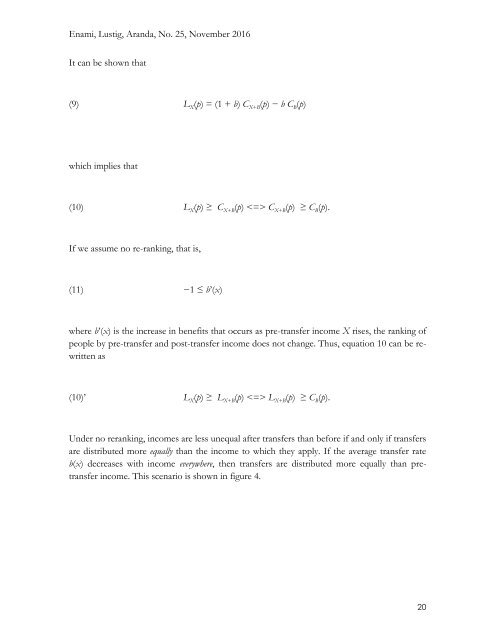IMPACT OF TAXES AND TRANSFERS
n?u=RePEc:tul:ceqwps:25&r=lam
n?u=RePEc:tul:ceqwps:25&r=lam
You also want an ePaper? Increase the reach of your titles
YUMPU automatically turns print PDFs into web optimized ePapers that Google loves.
Enami, Lustig, Aranda, No. 25, November 2016<br />
It can be shown that<br />
(9) L X (p) = (1 + b) C X+B (p) − b C B (p)<br />
which implies that<br />
(10) L X (p) ≥ C X+B (p) C X+B (p) ≥ C B (p).<br />
If we assume no re-ranking, that is,<br />
(11) −1 ≤ b’(x)<br />
where b’(x) is the increase in benefits that occurs as pre-transfer income X rises, the ranking of<br />
people by pre-transfer and post-transfer income does not change. Thus, equation 10 can be rewritten<br />
as<br />
(10)’ L X (p) ≥ L X+B (p) L X+B (p) ≥ C B (p).<br />
Under no reranking, incomes are less unequal after transfers than before if and only if transfers<br />
are distributed more equally than the income to which they apply. If the average transfer rate<br />
b(x) decreases with income everywhere, then transfers are distributed more equally than pretransfer<br />
income. This scenario is shown in figure 4.<br />
20



